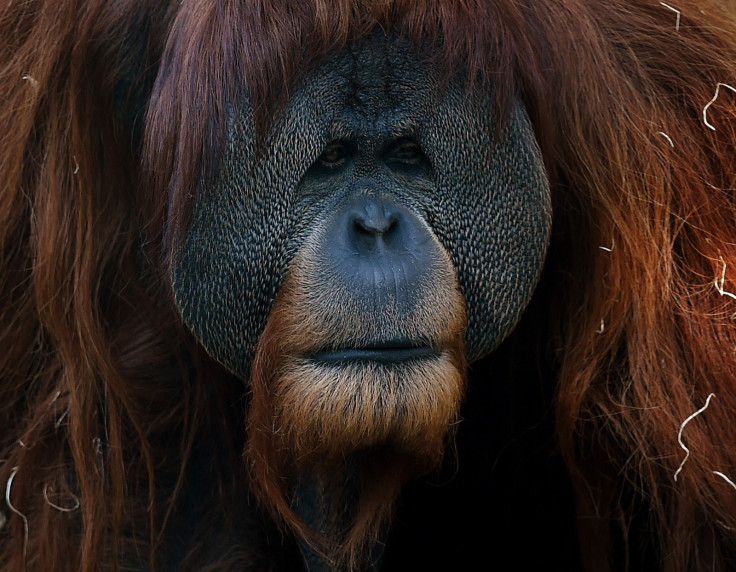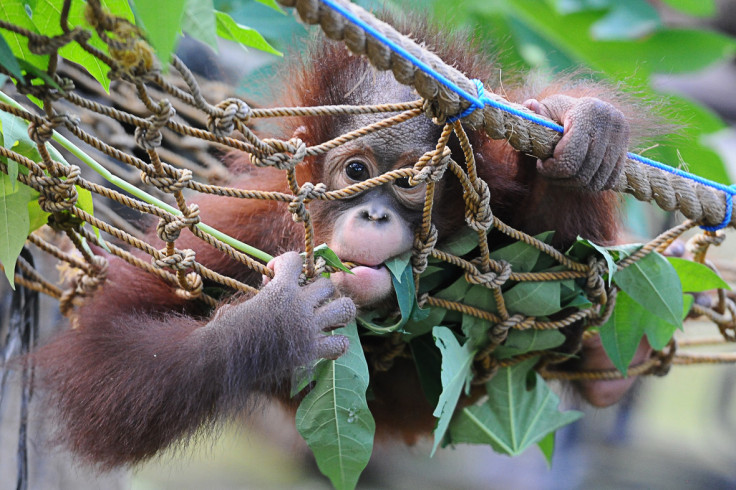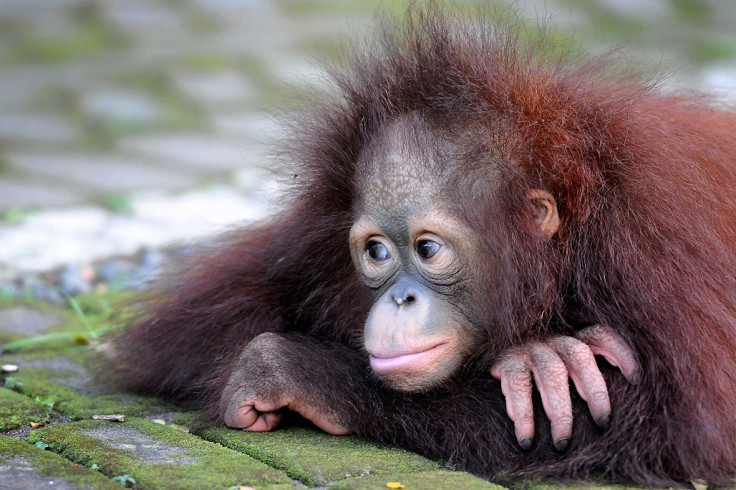World Orangutan Day: Facts about the close relative of humans

On 19 August, the world celebrates a day dedicated to one of our closest relatives. Orangutans share 96.4% of our genetic make-up, making them one of the closest things to us in the animal kingdom.
Despite the similarities that they share with us, we have ruined their habitat like we have with most animals. Around 100 years ago, there were 230,000 orangutans across south-east Asia. Today, there are around 60,000 limited to living on two islands: Borneo and Sumatra.
To celebrate our long armed relative, IBTimes UK brings you a few facts about the orangutan.
- Despite there being two species of orangutan, the Bornean, of which there are 54,000, and Sumatran, 6,000 making it critically endangered, they can be bred together. The females tend to give birth in the wild when they are around 15-16 years old, but those in captivity can begin breeding when they are as young as eight, despite having a life expectancy of 45 years.

May 19, 2014: Rizki, a 10-month-old orphaned Bornean orangutan starts learning to eat leaves at Surabaya Zoo, Indonesia, in preparation for being released into the wild Robertus Pudyanto/Getty Images - The males tend to be around 5ft tall, whereas the females are considerably smaller at around 4ft 2. Despite the males' relatively small stature in comparison to a human male, they can have an arm span of up to eight feet.
- Orangutans spend most of their time dwelling in the trees. They sleep in nests that they have made from assembled branches and leaves, whereas other apes such as gorillas and chimpanzees spend most of their time on the ground, thus giving them the claim of being the largest living arboreal animal. Another difference from their cousins is that, when they do come down from the ground, they walk on all fours but with their palms face down, unlike knuckle walkers such as gorillas.

Damai, a three-year-old Bornean orangutan, waits to leave Surabaya Zoo Getty - Although you may think their orange coat would give them away, it actually serves as an excellent camouflage. The lack of sunlight that fails to get through the intense canopy, which they are sheltered by, gives off an orange-red light, meaning they fit right in.
- Unlike most primates, orangutans are not the most sociable creatures. Males usually roam alone while the females will be accompanied by an infant or two. Scientists are not quite sure why they differ to other primates in this regard, but the most popular theory is that due to the amount of energy they need, they cannot afford to be sharing their food.
© Copyright IBTimes 2025. All rights reserved.






















